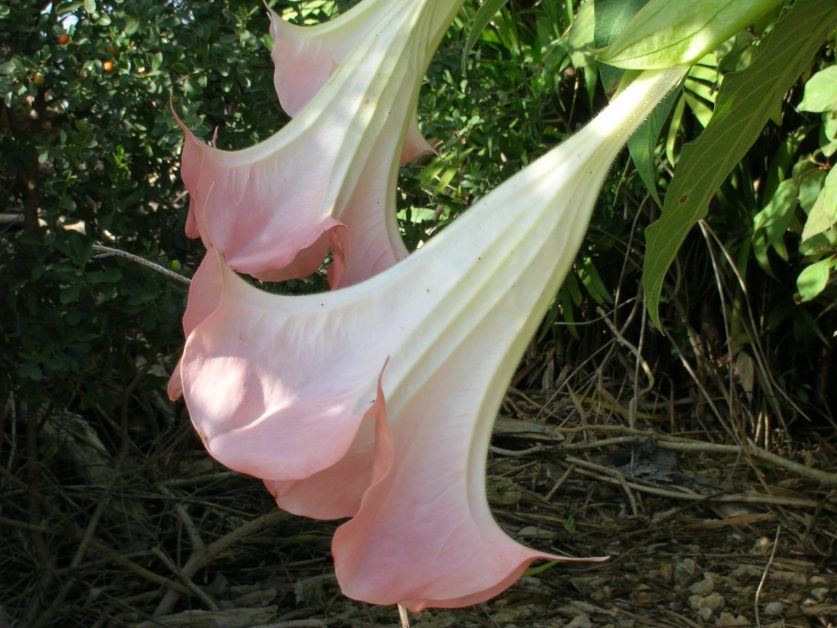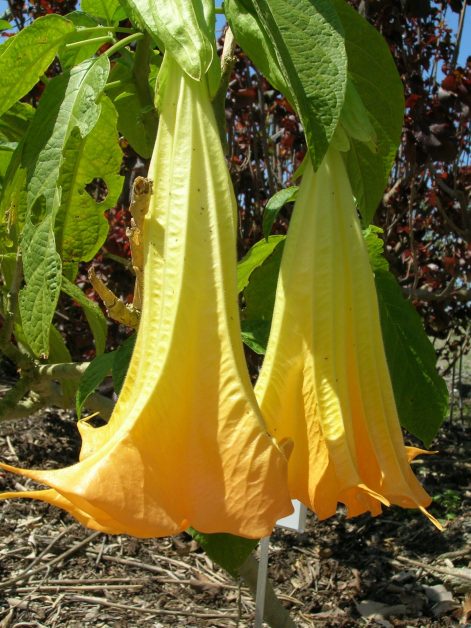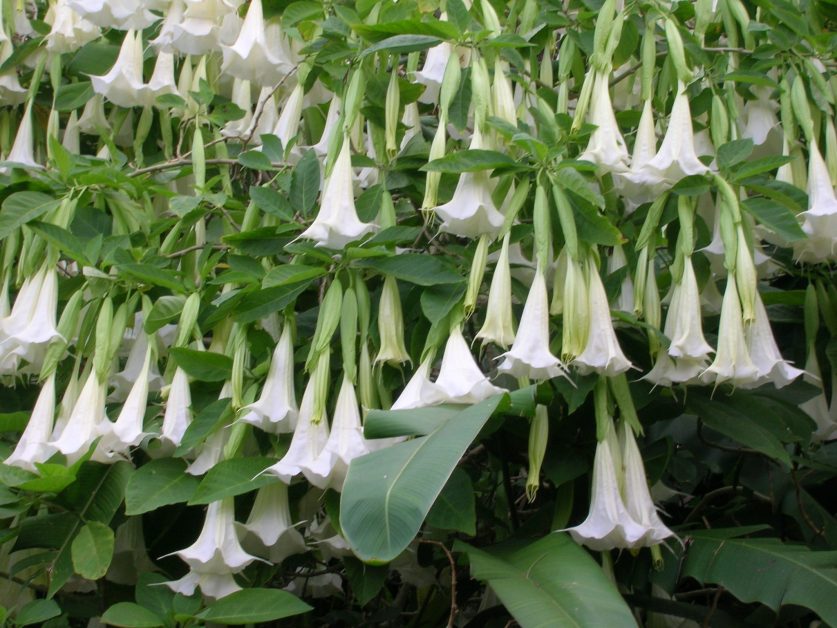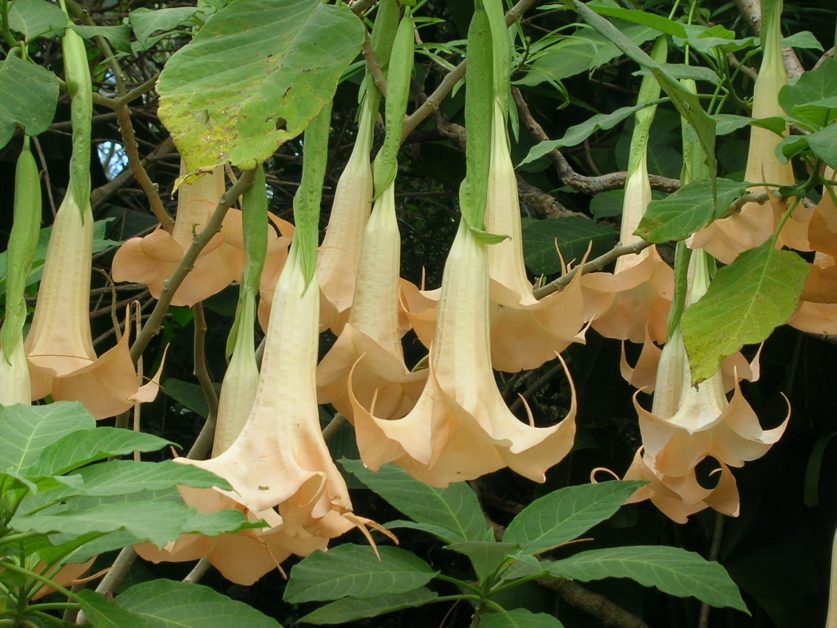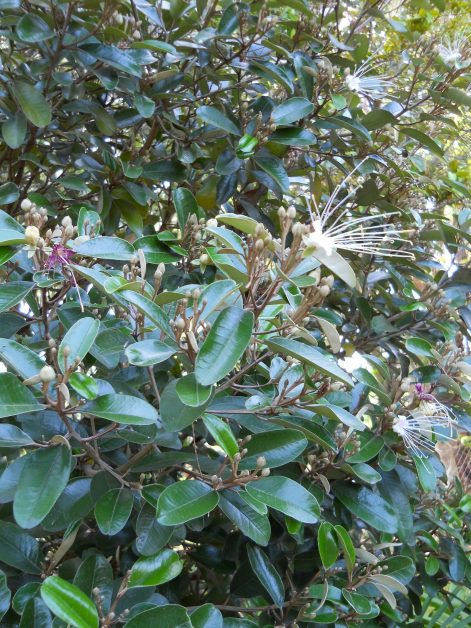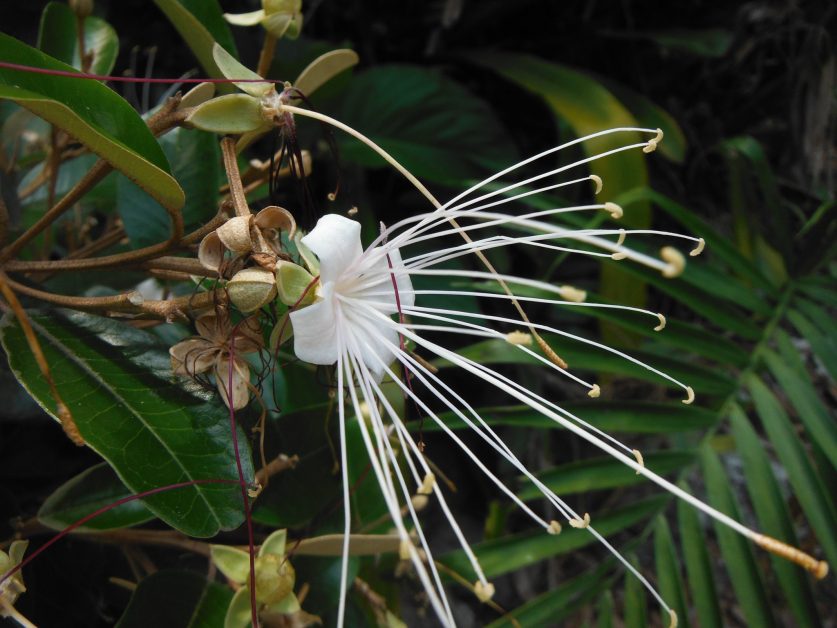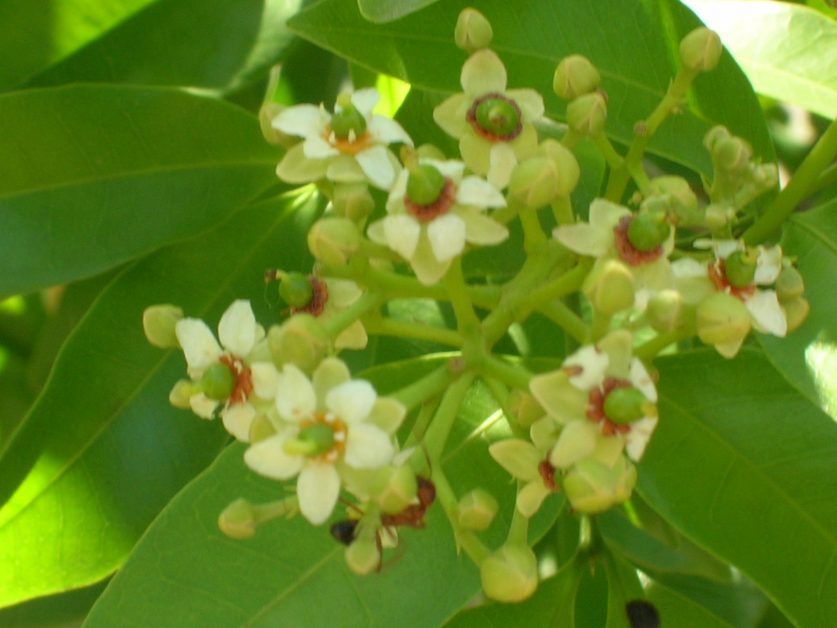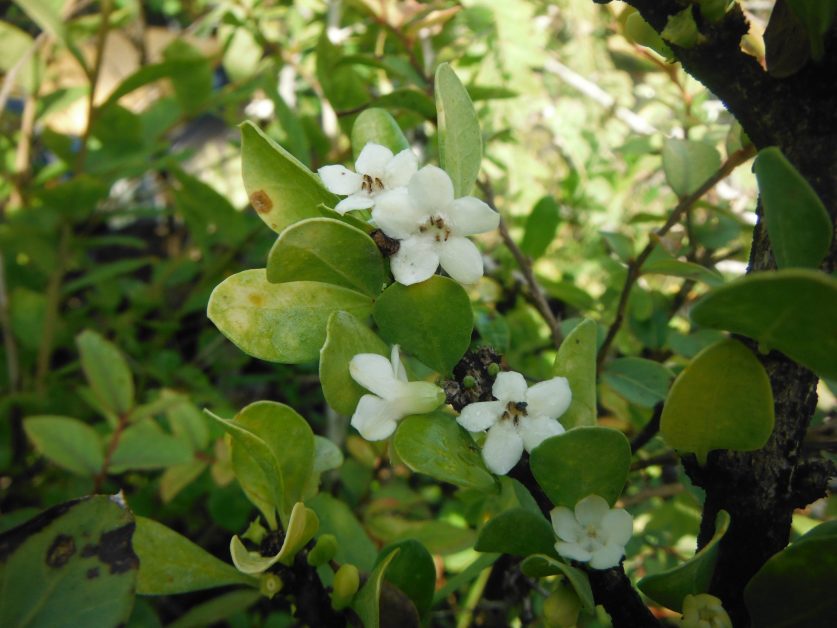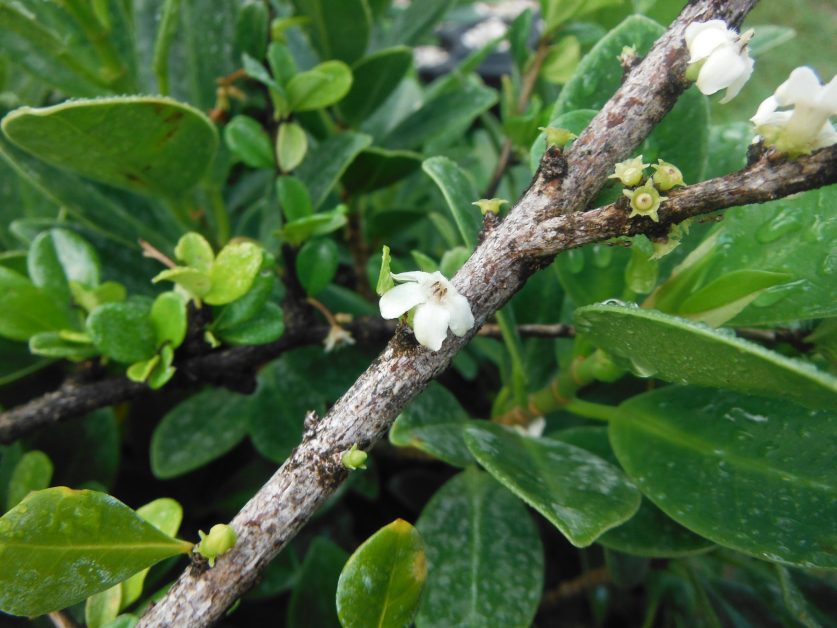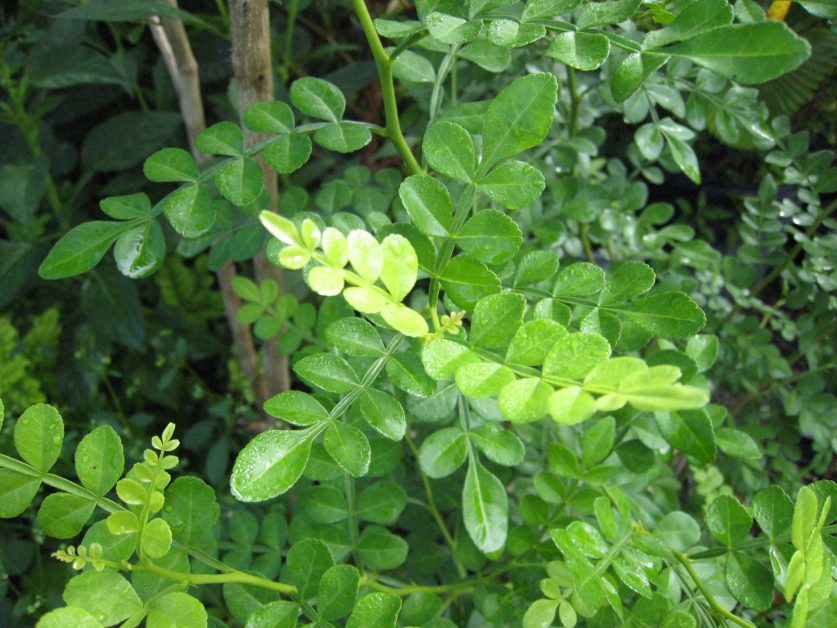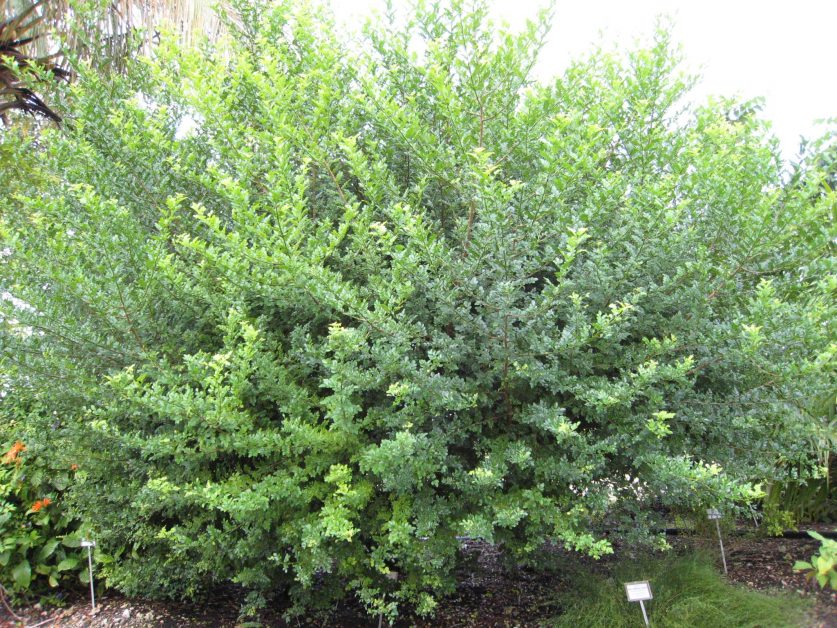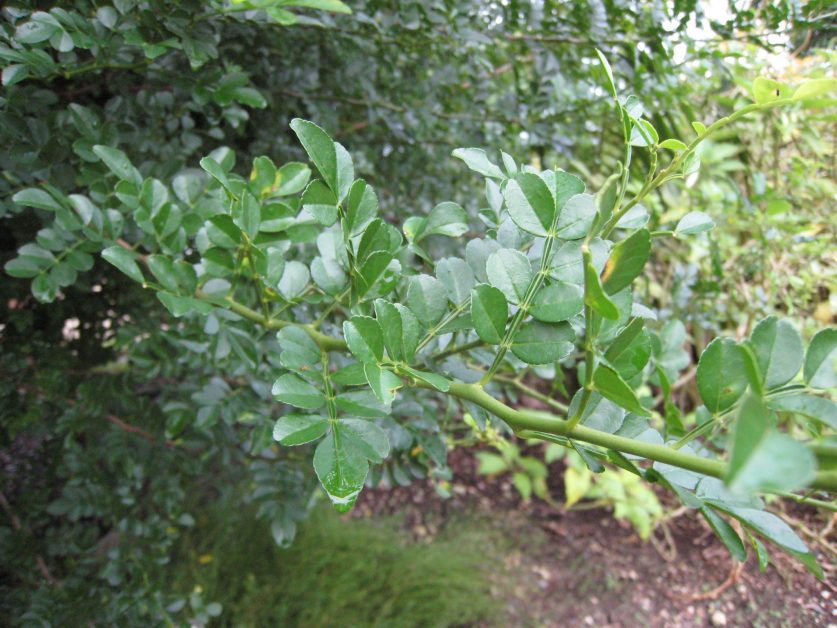Fragrance for Your Yard, Part IV
Here is the final installment in our series on fragrant shrubs and trees growing at Richard Lyons’ Nursery.
Brugmansia sp. (Angel’s Trumpet) – In bloom, this genus of seven species is hard to forget. It bears large, pendant, trumpet-shaped flowers that emit a pleasing fragrance that is strongest during evening hours. Brugmansias, related to peppers, potatoes and tomatoes, are native from western South America into southeastern Brazil. They can be grown as multi-stemmed shrubs or pruned into single-trunked small trees that mature from 10-36 ft. tall. For best results, plant in a sunny site and provide regular watering.
Capparis cynophallophora (Jamaican Caper) – The sweet-smelling flowers of this small, long-lived tree are enjoyed natively in a vast range from Florida to the Caribbean and through Mexico and Central America into northern Argentina. The flowers are not only fragrant, but showy, produced in terminal clusters highlighted by white petals and purple stamens. Glossy oval leaves also contribute to the beauty of this species, which is a larval host to butterflies. Jamaican Caper matures in the 6-20 ft. range and is known for its great drought tolerance and resistance to hurricanes.
Cornutia grandifolia (Jamaican Lilac, Tropical Lilac, African Lilac) – This fast-growing species produces prominent purple-blue blossoms on stalklike inflorescences, but the flowers are not responsible for the plant’s distinctive aroma. Rather, it emanates from its velvety leaves and is enhanced by anything that rubs the leaves. It is a butterfly attractant. Despite two of its common names, the plant is endemic to Costa Rica. It reaches 10-12 ft. at maturity and performs well in sun to partial shade. Average watering practices are sufficient for C. grandifolia.
Eriobotrya japonica (Loquat) – This is a very versatile plant in the landscape. It not only develops into an attractive small tree and produces a tasty fruit, but also its white flowers emit a pleasant scent during the fall and winter months, when lots of other plants have stopped flowering. For those reasons, Loquat has been distributed widely from its origins in south-central China. Left unpruned, the tree will reach 16-25 ft., but it can also be managed as a shrub. In the spring, its small fruits ripen to a yellowy-orange color. Depending on the cultivar, the fruit flavor ranges from sweet to subacid to acid, with hints of peach, citrus and mango. Best of all for growers in southern Florida, the Loquat is unfazed by alkaline soils.
Exothea paniculata (Inkwood) – A long-lived perennial, Inkwood is native over an extensive range from east central Florida into the Caribbean, Mexico, Central America and northern South America. It grows slowly to 20-30 ft., and sometimes even 50 ft., developing a dense, slender form. Inkwood handles highly alkaline soils easily. Its fragrant small flowers are white, with a yellow to orange ring or disc in the center. Leaves are a glossy, dark green color. Its red berries, which later turn deep purple, are appealing to birds. The trees’ bark and berries have been used in the Bahamas to make an inklike fluid.
Randia aculeata (White Indigoberry) – Here is another Florida native whose range extends into the Caribbean, Mexico, Central America and northern South America. It is fairly small and slow-growing, maturing to 3-10 ft., but sometimes taller. The plant produces small, white, pleasantly-scented flowers year-round. Its glossy, spiny foliage and dense branching are also part of its appeal. Randia’s strong and extensive root system makes it hurricane-resistant. It is able to handle dry to moist conditions and is undemanding about soil types, as long as they are well-drained. It should be planted in full sun. This interesting species is a bird and butterfly attractant.
Zanthoxylum fagara (Wild Lime) – This citrus relative — its bark even emanates a citrusy odor — is a rounded shrub or small tree that can reach 23 ft. It is native over a vast range in the New World: Florida, the Caribbean, Texas, Mexico, Central America, and South America as far south as Paraguay! It features a fairly rough bark and spiny branches. Wild Lime is commonly used in butterfly and bird gardens. Its greenish-yellow flowers are fragrant and occur year-round, and its crushed leaves emit a limelike aroma. The wood of Wild Lime is dense, and has been used in the manufacture of cabinetry. This species should be planted in a sunny to partly shaded exposure.
- Brugmansia versicolor (Peach Angel Trumpet)
- Brugmansia ‘Jean Pasco’ (Angel Trumpet)
- Brugmansia x candida (White Angel Trumpet)
- Brugmansia suaveolens (Salmon Angel Trumpet)
- Capparis cynophallophora (Jamaican Caper)
- Capparis cynophallophora (Jamaican Caper)
- Cornutia grandifolia (Tropical Lilac)
- Exothea paniculata (Inkwood)
- Randia aculeata (White Indigoberry)
- Randia aculeata (White Indigoberry)
- Zanthoxylum fagara (Wild Lime)
- Zanthoxylum fagara (Wild Lime)
- Zanthoxylum fagara (Wild Lime)
